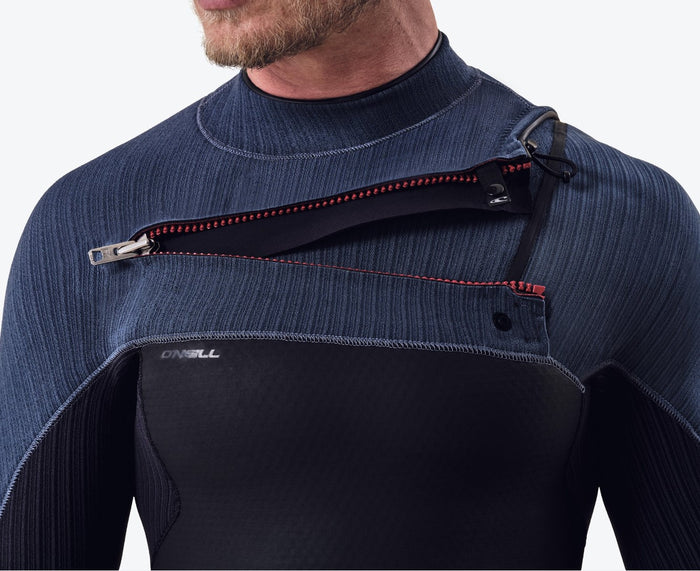Do I need a back zip, chest zip or zipless wetsuit?


The zip or entry system has a huge influence on the flexibility and ease of use of a wetsuit. As a rule, bigger zippers mean less flexibility. At the same time, bigger zippers make it easier to put on and take off a wetsuit. Therefore, it is important to find the right balance between flex and convenience.
Read more about putting on a wetsuit
For decades, back zips were the most common zip system for wetsuits. Back zip wetsuits have a large vertical zipper along the back that can be zipped up with a chord. To seal out water, most back zip wetsuits have a neoprene panel behind the zipper and a velcro closure in the neck area. The big zipper that can be zipped down all the way to the waist makes it very easy to get in and take off the suit. Because the zipper itself isn’t flexible however, a back zip wetsuit offers less flexibility. Apart from that, the zipper also affects the insulating capacities of your wetsuit.
Therefore, back zips are now mostly found in entry-level and kids wetsuits.
Chest zip wetsuits, have become the new standard in performance wetsuits. Chest zips provide a better fit and more insulation. In this wetsuit design, a zipper runs horizontally along the chest to connect the collar that goes over your head with the lower part of the wetsuit. The shorter zip improves the flexibility of your suit, but makes it a bit harder to get in and take it off. Fortunately, the neoprene that is used in wetsuits these days has become much more flexible. As a result, putting on a chest zip suit is less of a struggle than it used to be.
At O’Neill, the chest zip system is called F.U.Z.E. technology. Please note that there are also front zip suits and vests with a zipper running vertically over the front of the garment. These are however not suitable for surfing!
Zipless or zip free wetsuits, as the names suggest, do not have a zipper. Instead, they rely on stretchy materials, specifically designed collars and adjustable closures like velcro or snap buttons to provide a snug fit. This design enhances flexibility and minimizes water entry. Zipless wetsuits can be more challenging to put on and take off, requiring a bit more time and effort. Because zipless entries only work with thin, flexible neoprene, this entry system is only found in summer and spring suits, and not in high-performing winter wetsuits.
At O’Neill, the zipless system is called COMP technology.
When deciding which type of zip system to choose, consider factors such as comfort, ease of use, mobility, and insulation. If you are not sure, it can be helpful to try on different types of wetsuits and see which style fits your body shape and movement preferences best.
Be the first one to know all the latest news and exclusive offers!
*valid for new members only.
cart.general.warning
0 comments